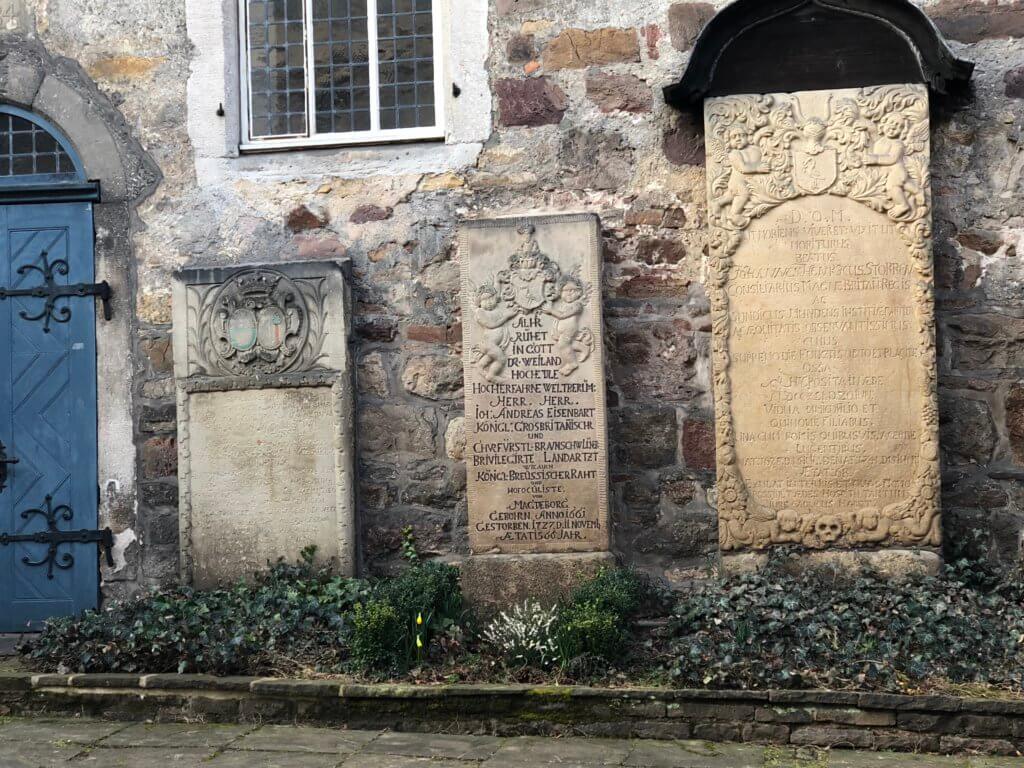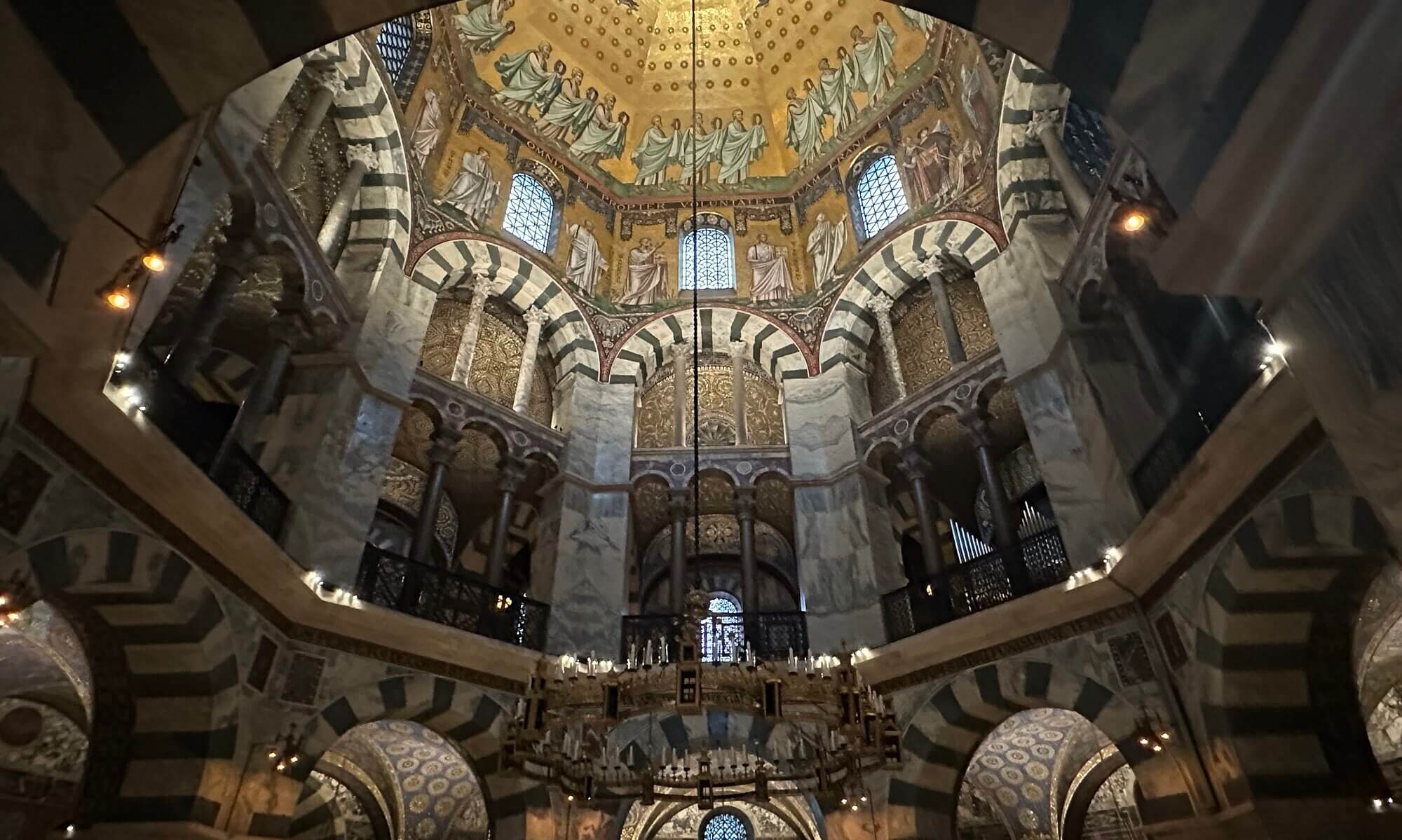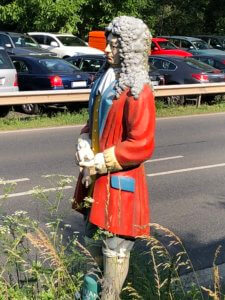If you’re at Hann. Münden, Germany you cannot omit to see famous Dr. Eisenbarth: statues of him are placed at the main roads leading into the city, you can see the house where he died and find his grave stone at the church Aegidienkirche. And then there is also the glockenspiel at the old town hall and you might also see a tourist guide dressed up as him.
But the story is a different one as the one you might know. He is still famous because of the song Ich bin der Doktor Eisenbarth (also: Ik ben de Doctor Yzerbaard or Oh! Dr. Eisenbart’s my name) created by a student of Göttingen and promoted within student associations. The song made him famous but it made also fun of him. He never received an academic degree that allowed to call him Dr. Eisenbarth but he was a real doctor, invented new procedures, medicine and instruments – and he never removed a tooth (as he is often depicted doing).
„Ich bin der Doktor Eisenbart,
widewidewitt, bum, bum,
kurier die Leut’ auf meine Art,
widewidewitt, bum, bum.
Kann machen, dass die Blinden geh’n,
widewidewitt, juchheirassa,
und dass die Lahmen wieder seh’n,
widewidewitt, bum, bum.“

He was well-known and accepted as a doctor during his time but he had to work while permanently traveling. And as he had no office he was curing people on fairs. To promote his business he used what we call today flyer, placed advertisements in local newspapers and he had an entourage of in the end 120 persons that entertained the people. And that might be the source for the song making fun of him.

Johann Andreas Eisenbarth was born at Oberviechtach, Germany in 1663. His name is sometimes spelled different as Eisenbart or Eysenbarth. His father was a surgeon and an oculist and obviously taught him his profession. Later he successfully cured eye cataracts and other illnesses. Many emperors like Friedrich Wilhelm I. of Prussia supported him and gave him privileges. He could move freely to do his business and had not to pay toll for his medicine. Therefore he set up a medicine factory at Magdeburg, Germany.

Johann Andreas Eisenbarth wrote his last will at the guest house Schwarzer Bär at Göttingen and died at Hann. Münden in 1727. The house where this happened can be seen in the pedestrian zone – a statue of him can be found at the facade (the text underneath says: ‘Within this house doctor Eisenbarth worked and died. He was better than his reputation.’). His grave stone stands outside at the Aegidienkirche.
Loading map...


